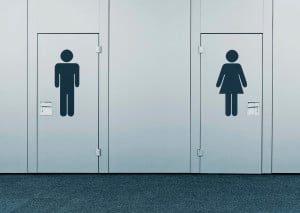Originally published on The Huffington Post and republished here with the author’s permission.
It’s hard to argue that poverty does not affect education.
It’s hard to argue that children who come from homes where they may be wanting – wanting for food, for time, or for resources – don’t enter the school door with a little less than others. And it’s hard to argue that children living in poverty and attending schools that are underfunded, underresourced, and understaffed are not literally up against the system.
We have established a system where those who are poor are more likely to stay poor, and lately we have seen a sharp increase in those considered poor. In fact, a recent research bulletin from the Southern Education Foundation highlights that, as of this year, the majority of public school children come from poverty. According to the bulletin,
The latest data collected from the states by the National Center for Education Statistics (NCES), show that 51% of the students across the nation’s public schools were low income in 2013.
In 40 of the 50 states, low income students comprised no less than 40% of all public schoolchildren. In 21 states, children eligible for free or reduced-price lunches were a majority of the students in 2013.
51% of our children across the country now live in poverty, and the numbers appear to be growing.
Coincidentally, it has also been 51 years since we, as a nation, declared poverty unacceptable.
It has been 51 years since President Lyndon B. Johnson launched the War on Poverty in his 1964 State of the Union Address:
This administration today, here and now, declares unconditional war on poverty in America. I urge this Congress and all Americans to join with me in that effort.
It will not be a short or easy struggle, no single weapon or strategy will suffice, but we shall not rest until that war is won. The richest Nation on earth can afford to win it. We cannot afford to lose it. One thousand dollars invested in salvaging an unemployable youth today can return $40,000 or more in his lifetime.
During this address, Johnson also acknowledged that “many Americans live on the outskirts of hope – some because of their poverty, and some because of their color, and all too many because of both.” Poverty, Johnson said, was a “national problem,” one that required a collective response across all levels of government and society. His address singled out every American to do his part.
Fifty-one years later, however, we have established systems that perpetuate and even accentuate poverty.
Schools in low socioeconomic areas are underfunded when compared to higher socioeconomic neighborhoods. They tackle chronic issues with a chronic lack of resources. While those who work in these schools may be passionate, hard-working, and motivated educators, they frequently lack experience, support services, and political power.
Thus, the message becomes clear: If you are born into poverty, you are likely to stay in poverty.
As a country, we have deep-rooted negative stereotypes about people living in poverty, despite the fact that people who live in poverty are as diverse in their norms, beliefs, and behaviors as people who live in any other socioeconomic stratum. Poverty spans geographical and ethnic boundaries, from urban cities to rural towns. There are many communities that have battled poverty for decades and many where poverty has arrived recently, unexpectedly, and in a rush.
Poverty is neither fair nor equitable, and it is not productive for society. If we ignore, as Charles Blow called it, the “corrosive effects of poverty” on our nation’s children, it will come back to haunt us. And as Steve Suitts, author of the Southern Education Foundation research bulletin, said, “It’s a matter of our national future, because when one group becomes the majority of our students, they define what that future is going to be in education more than any other group.”
So what do we do? Rather than just get angry, we must get active.
We can and should commit to addressing poverty via intersectoral alignment, change the formula by which we fund our schools, and ensure that inequities are at the heart of all policy discussions. Funding education via property taxes aligned to varying algorithms of local, state, and federal streams results in fundamental inequities. Such systems reward those who require the least rewarding and instruct those living in the poorest areas that the only way out is to relocate, which undermines the notion that education is the great equalizer.
If we dive deeper into these broad systemic changes, we see that there are a number of specific intermediate actions that we can all demand our policymakers undertake in order to directly and profoundly influence the education, well-being, and living conditions of children in poverty today.
1. Fully Fund Title I
Title I is the cornerstone of federal aid for K-12 schools and provides supplemental funding to local school districts to help meet the educational needs of students in high-poverty schools.
While the 2007 allocation for Title 1 was $27 billion, the current allocation for Title I in 2015 is $15.5 billion. Many experts estimate that fully funding Title I to properly serve the more than 11 million eligible children would require an annual expenditure of $50 billion.
While this is a formidable investment, national leaders should prioritize the funds to both ameliorate the effects of poverty on children and close the achievement gap with more sustained and targeted educational supports.
2. Maximize Meal Programs
Just over a fifth of US children live in a household that is “food insecure” – that is, having limited or uncertain access to adequate food at some point during the year.
For some children, the food they receive through the National School Lunch and School Breakfast Programs is their only sustenance.
These efforts should remain priorities when the Child Nutrition Act is reauthorized, and states with low direct certification rates should receive support to improve their systems and expand child access.
3. Improve School Climate
According to Eric Jensen and the Center for New York City Affairs, high-poverty schools are more likely to struggle with school climate concerns such as absenteeism and truancy, bullying, and trust and engagement issues that can weaken the learning environment.
Research by the National School Climate Center has consistently demonstrated that a positive school climate is associated with academic achievement, effective risk-prevention efforts, and positive youth development.
4. Improve Access to Advanced Coursework
Students in poverty should receive just as much access to relevant and challenging coursework through multiple pathways (such as Advanced Placement, International Baccalaureate, dual-enrollment programs) as their wealthier counterparts.
But simply offering them the same number of rigorous courses isn’t enough. They should also be provided with the academic supports they need to thrive and succeed in those courses.
***
Poverty affects our education, our economy, and our future.
It is becoming the norm, and we appear reluctant to address it. What was once a local, regional, or state concern is now a national issue and will affect our national progress.
But we have the steps in place to change it – and we’ve had these steps for over half a century. What has been waning is our will to act and our determination to succeed.
The benefit we have is that we know what we need to take to make a difference in the longer term and even within the current systems. There are steps we can take tomorrow in our classrooms and this year in our policy decisions.
We know the direction the trend is heading and we know the consequences of inaction, but are we ready to make the change?
[do_widget id=’text-101′]
Sean Slade is the Director of Whole Child Programs at ASCD a global educational leadership organization. He has over 20 years of experience in education in a career that has encompassed 4 continents and 5 countries. He has written extensively on topics related to the Whole Child, health and well-being and seeks to shift public dialogue about education from a purely academic focus to a whole child approach that encompasses all factors required for successful student outcomes. Sean is the co-author of School Climate Change: How do I build a positive environment for learning? (ASCD, 2014), a Social Development Expert for the NBC Parent Toolkit and host of the Whole Child Symposium.
Search our 3000+ articles!
Read our articles about:
Our online racial justice training
Used by hundreds of universities, non-profits, and businesses.
Click to learn more





















